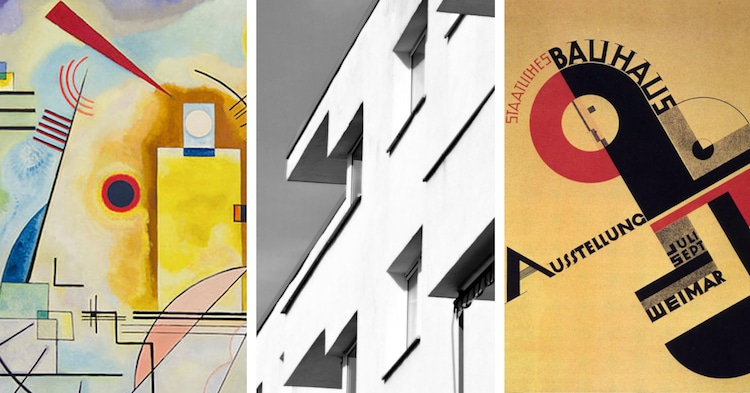 -Summarise the style/period.
-Summarise the style/period.
Bauhaus was a School for Architecture and Applied Art in Germany (1919-1933), where the attempts to realise the synthesis of autonomous art and the design of used objects design. The word Bauhaus could mean home or home build. It was founded by architect Walter Gropius in Weimar in 1919 and moved to Dessa and lasted until 1933. During that time, the school had revolutionised architecture and aesthetic concepts as well as practice. Buildings built or decorated by the professors of this school (Walter Gropius, Hannes Meyer, Laslo Mholy-Nagy and Vasilij Kandinski) have strongly influenced the modern architecture of the 20th century. Since 1996, the Bauhaus buildings in Weimar (Weimars Art Schools) and Dessau (Bauhaus Dessau) have been listed on the UNESCO World Heritage list in Europe, which last year in 2017 includes buildings such as buildings with balcony approach to Dessau and ADGB school in Bernau bei Berlin.
The Bauhaus emphasised practicality, and the school popularised sans-serif typographical designs like the Universal font, which are meant to be clear, readable, and versatile. Serifs are small ornaments that stick off of letters in some fonts (think Times New Roman or Courier), while sans-serif fonts (think Arial or Helvetica) do away with these. The reduction of ornamentation and the emphasis on simplicity that these fonts’ features were integral principles of the Bauhaus approach to design. While this might not seem like a big deal today, when hundreds of fonts are available with just the click of a button, the shift to sans-serif was a radical move in the heyday of the Bauhaus.
According to Bauhaus, the object does not have to add decorations that would hide or repair the ugly and shapeless parts, but rather the parts should be shaped in a beautiful, artistic way and the object will be beautiful in itself. Under the influence of some of the lines of modern art (expressionism, cubism and the peculiarity of some branches of abstract art) that are severely simplifying and discovering new shapes, they created useful objects for a new meaning achieving object functionality as a creative act. The ideas of Bauhaus are still respected today in the principles of industrial design: the unity of purpose (function), respect for materials and serial production processes.
Filled with ideas and a field for experimentation of the free and often applied arts, design, architecture and all sorts of educational methods, Bauhaus was an energetic school.
-Does the work remind you of any contemporary designers or design?
From furniture to graphic design, today, the Bauhaus influences can be seen everywhere. Bauhaus helped the design world step away from the ornate designs of the early 20th century with its emphasis on function before form, an instigator in the minimalism trend which is still one of the most popular styles to date. Showing how far the spread of the school’s teachings have reached, other leading styles are always recognisable in their Bauhaus influences. This influence has become so entrenched in the design world that the designs are now so familiar we might miss them if we don’t take a step back to really look at them. The movement has helped the industry stay forward-thinking and progressive in the face of adversity, while embracing of technology and mass production ensured the good design would be available to everyone, not just the elite. As the world continues to shift and change around us, it becomes a driving force, the force we need just as much now as 100 years ago. We named Germany as one of our top places to visit in 2019, because of the centenary of the Bauhaus design movement. There will be some exhibitions and events in 2019 in Germany, and it’s Bauhaus cities, so make sure to visit them as well.